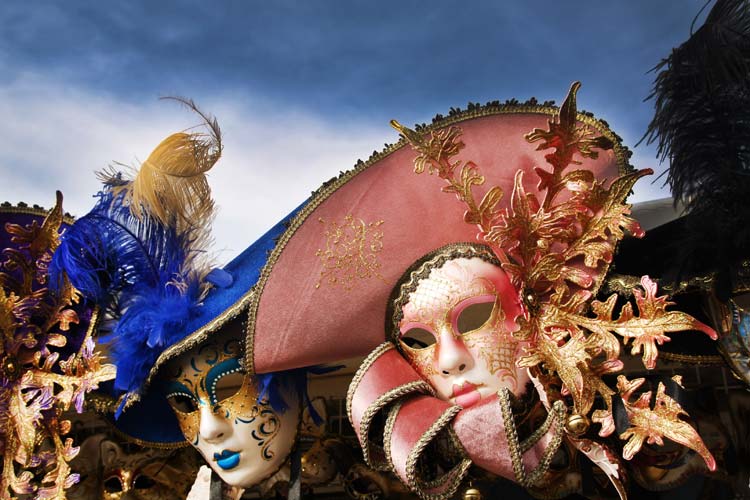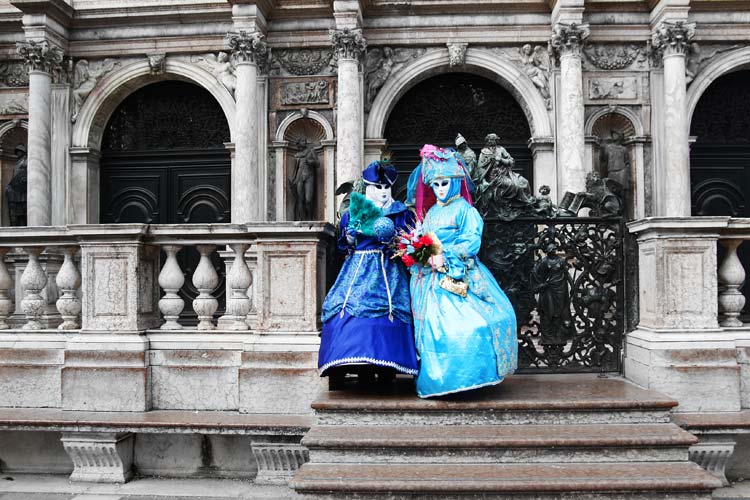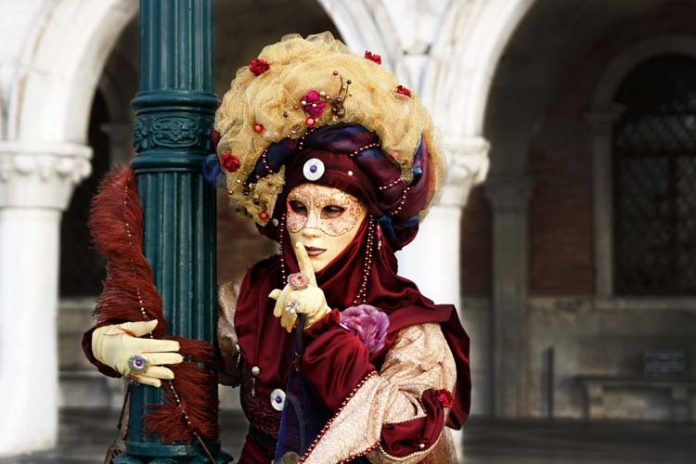One of the world’s most-known festivities, the bright, colorful, noisy and lustful Carnival in Venice, each year makes thousands of visitors forget who they are in the daily life and jump straight into the depths of imagination. That’s what carnivals were created for in the first place – to give people a chance of making their twisted, unearthly dreams come true, to forget the rules and so-called normality. Here’s some useful info for everyone who is planning to join this enchanting spectacle.
Table of Contents
The history of Carnival in Venice
The history of Carnival in Venice dates back to 12th century when the victory of 12000 Repubblica Della Serenissima (The Republic of Venice) in the war against Urlico (Patriarch of Aquileia) was celebrated. The spontaneous happiness gathered people on the San Marco Square, where they danced, socialized and enjoyed the triumph. Later on, in the Renaissance, the festival became more of an official event and a great pride of Venice. In the 18th century, hedonism reached so far the festival turned into two months of balls, shows, and masquerades. Fancy ladies spent evenings in glittering dresses under glittering chandeliers of opera houses, musicians and artists head to Venice to work and play, young patricians could finally indulge in excess, as the class barriers didn’t matter during the carnival. The festival was supported by authorities for quite a simple reason: licentiousness and extravaganza released tensions and made people forget about the boring trouble of their every-day lives, so they didn’t feel a burning need to complain afterward. The poor partied with the rich, so it was also used for social integration as well. Napoleon didn’t agree with the benefits of the festivities, and when he took power over Venice at the end of 18th century, the carnival was outlawed. It went on and off in the following centuries, but in the moments of revival concentrated mostly around private parties. Only in 1979, it was brought back to life in full shine and glory.

The best time to start partying
The Carnival in Venice begins two Saturdays before Ash Wednesday and finishes with the Christian celebration of Lent, on Shrove Tuesday. La Festa Delle Marie, a procession through the city held on Friday afternoon, is a foretaste of the festival. The official opening takes place on Saturday though, with the procession leaving La Festa Delle Marie. During the weekdays the festival is not as bustling as one could imagine, yet it gets mad on the weekend. From Monday until Thursday there’s a lot of time to explore the city of Venice and just breathe in the magic. If what you want is the craziest and most vibrant party ever, don’t miss the finale weekend.
Things to do during the Carnival
If you fancy some glamour, you can join one of the elegant balls organized in hotels and various splendid halls. One of me most exclusive among them is Il Ballo del Doge (The Dog’s Ball), held in the wondrous palace of Palazzo Pisani Moretta and being a reconstruction of the masquerade ball from the 18th century. On Saturday and Sunday, you can also dress up and go to the opera house or a theatre, enjoy the shows and sparkling lights, soaking up the magical atmosphere. On Sunday a procession of gondolas with passengers in fabulous costumes and masks drifts down the canal. A typical way of spending time during the Carnival is simply strolling about the streets, visiting cafés, dancing on plazas. St. Mark’s Square is the heart of the Carnival, but you can also wander around other parts of the town, the festivities spread across Venice. Calcio Storico (a medieval form of football) matches are played, vivid parades walk through the city, street artists keep performing.

The masks and costumes
To truly become a part of the Carnival in Venice, you need a mask at least. It’s all about secrecy and anonymity, about eccentricity and insanity. Besides, it’s a beautiful chance to turn into an opera character for a little while or a fairy-tale creature. There’s a lot of kitschy, poor-quality gadgets being sold, so to get a proper mask you should go a traditional shop, such as Tragicomic, L’Arlecchino or Ca’ Macana. If you want more than that, get a whole costume. This is optional if you’re going to party on the streets, but obligatory on a ball.
Accommodation
It’s hard to find an affordable place to stay in Venice during the festivities. The truth is hotels, guest-houses, etc. make great use out of the tradition and raise prices for this occasion. The sooner you book the hotel, the better.
Besides of the festival
Venice is an enchanting city and it’s worth to explore it a bit during the festival. Getting around the Grand Canal in a beautiful gondola, having a taste of the heavenly Italian cuisine and visiting the marvelously golden St. Mark’s Basilica are things you should definitely do on the side of the Carnival in Venice. You can also make a trip to nearby Verona and check out how’s the festival there. It’s a bit quieter than the one in Venice, but splendid as well and with the long tradition.




